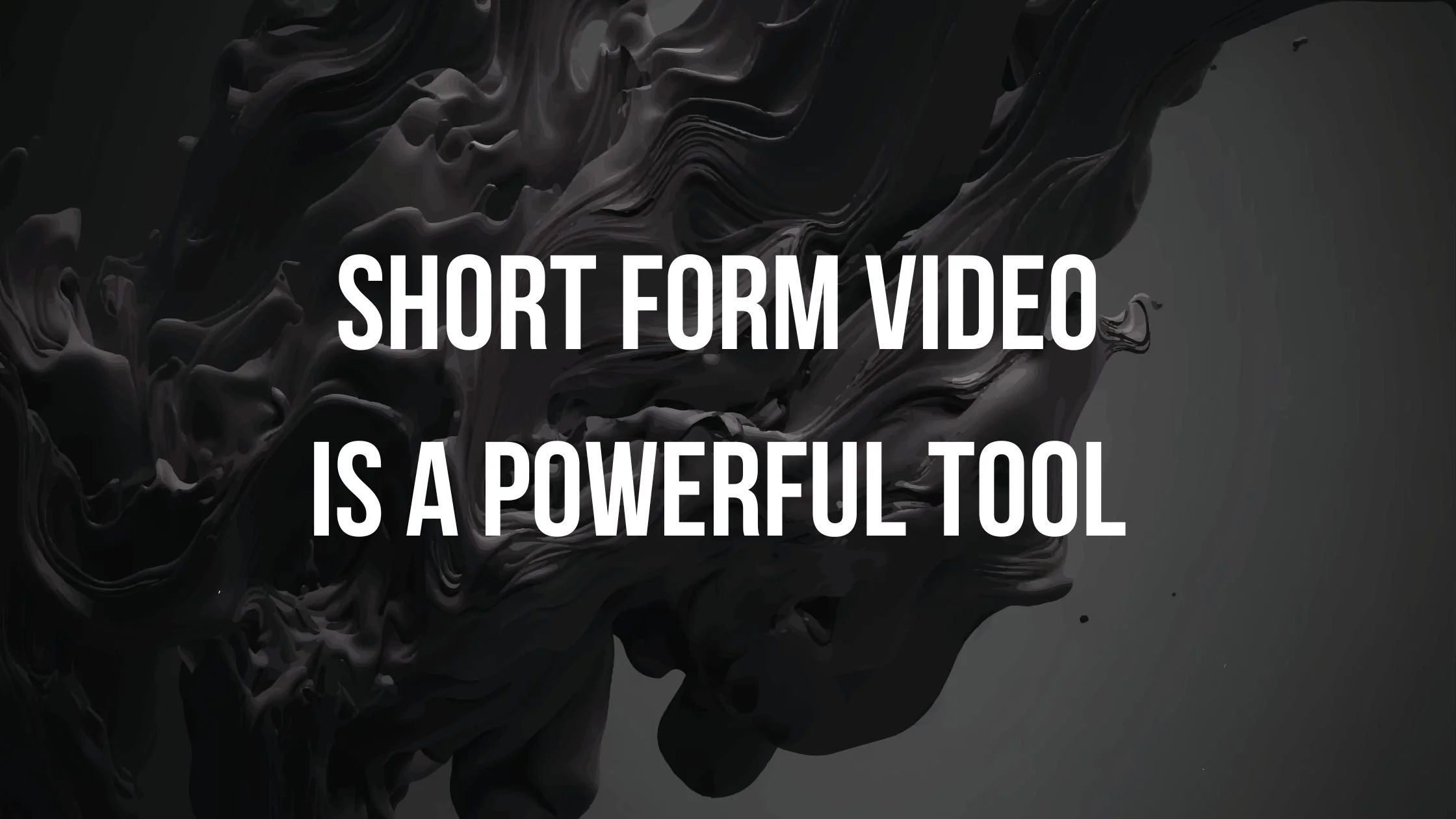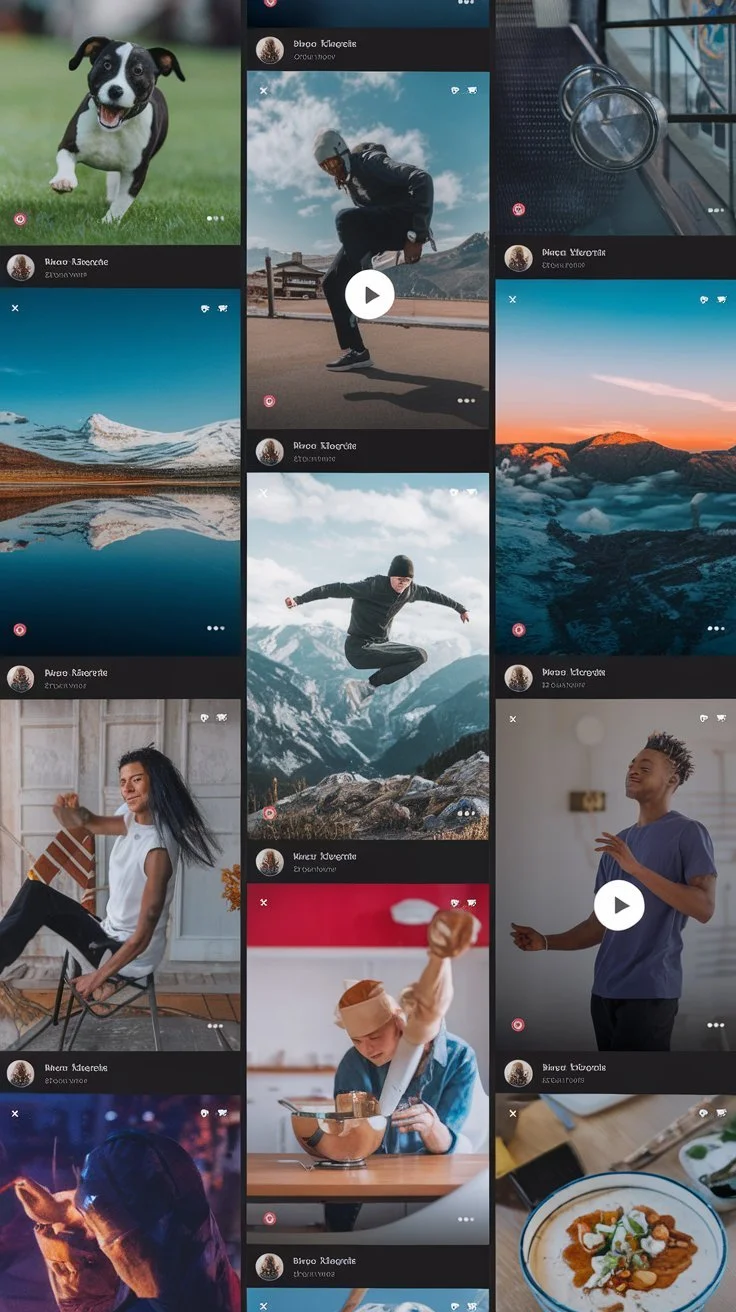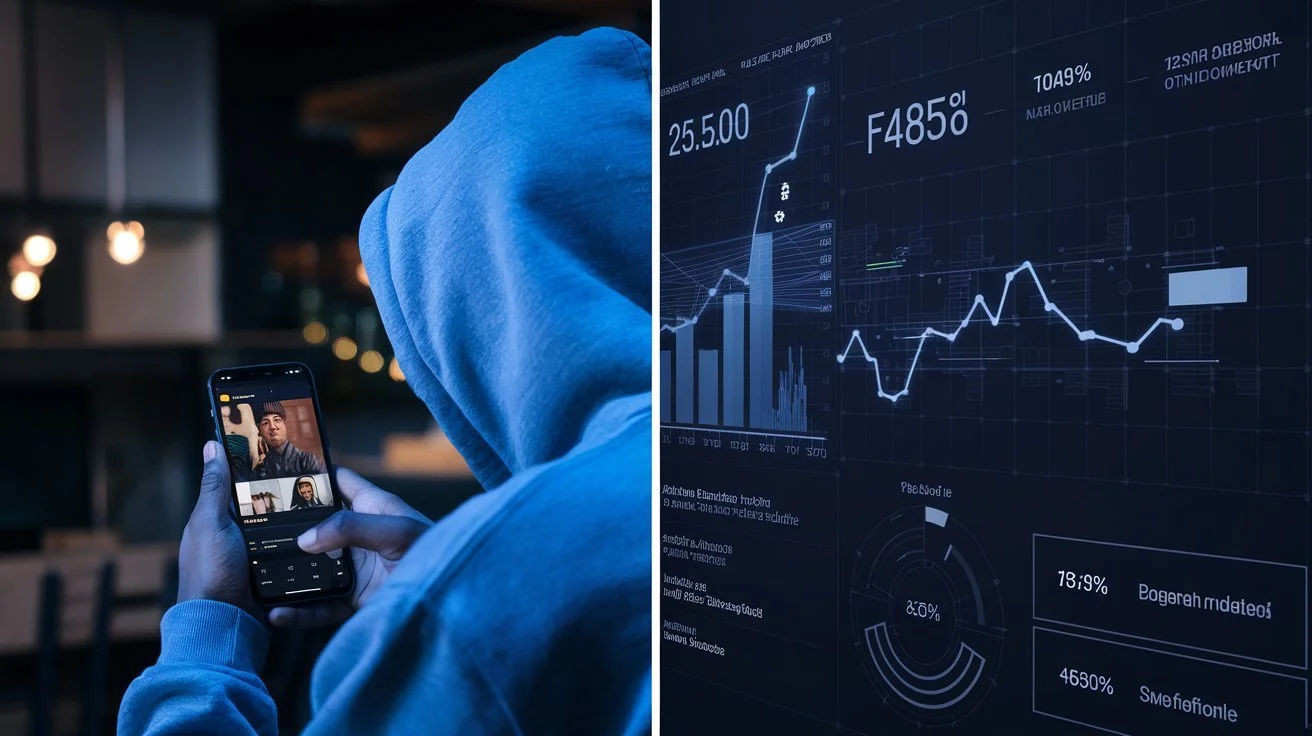Video Marketing and Short Form Content: Why It’s Hot and How to Succeed
The short form video format has become a powerful tool for brands and creators. Platforms like TikTok, Instagram Reels, and YouTube Shorts are transforming video marketing, attracting unprecedented levels of engagement and reshaping consumer behavior.
These bite-sized videos, typically under 60 seconds, cater to audiences who want something engaging and digestible. However, creating successful short form videos requires combining strategy, creativity, and authenticity.
Why Short Form Video Is So Hot Right Now
Short form videos are booming for a variety of reasons.
Attention Span: People are flooded with information, and audiences prefer quick, engaging insights they can consume in seconds.
Easy Access: Smartphones and high-speed internet have made video creation and viewing more accessible.
Platform Preference: Platforms like TikTok, Instagram, and YouTube prioritize short form, amplifying reach and visibility.
This format caters to Gen Z and Millennial preferences for speed, simplicity, and high engagement. Data shows that these audiences prefer video over text, making it an ideal medium for brands to connect with younger demographics. Short-form videos enable brands to experiment and receive quick feedback, helping them remain agile and relevant.
Strategies for Effective Short Form Video Marketing
To make short form content work best, brands need a strategic approach for success.
Tell a Story in Seconds
Storytelling is a mainstay in marketing, arguably even more so in video. This is notably true for videos that last less than a minute. Brands must craft a compelling story within this limited timeframe.
Hook Immediately: capture the viewer's attention in the first 2-3 seconds. Start with a question, an unexpected fact, or a visually captivating shot.
Keep It Simple: Short form videos don’t allow for complex plots. Focus on a single message or idea.
Add Emotion: Whether it’s humor, excitement, or surprise, emotions make stories memorable. Short videos that evoke feelings tend to be shared more frequently.
For instance, a 15-second video showing a quick “before-and-after” transformation can create intrigue and make viewers want to see the results. This can be effective for beauty brands, home decor, or quick recipes.
Keep It Real
Modern audiences connect with genuine expression. Being relatable and true-to-life is more effective in short videos than being polished and scripted. Incorporate realism into your message.
Behind the Scenes: Show what happens off camera or the people behind the brand.
User-Generated Content (UGC): Sharing real customer testimonials, reviews, or reactions to your product builds trust.
Unpolished Aesthetics: On TikTok, a polished and highly produced advertisement can feel out of place. Instead, opt for natural lighting, genuine reactions, and minimal editing.
Realistic delivery humanizes the brand. People feel connected to a human instead of just seeing an ad.
Engage Your Audience with Interactivity
Interaction encourages viewers to participate, turning passive watching into active engagement. Consider these approaches:
Polls and Quizzes: Platforms like Instagram allow users to add polls, quizzes, and question stickers to their videos. This invites viewers to engage directly, increasing viewing time.
Challenges: TikTok challenges encourage users to recreate trends or join brand-specific hashtags, yielding strong results.
Shoppable Videos: On platforms like Instagram and YouTube, shoppable videos enable viewers to purchase products instantly, streamlining the shopping journey.
By involving the audience directly, brands can boost engagement rates and encourage a community around their content.
Incorporate “Edutainment”
Edutainment combines education and entertainment, offering value to viewers while keeping them engaged. This is trending on platforms like TikTok, where users often follow accounts that teach them something new in a fun way.
Quick Tips and How-Tos: Condense advice, hacks, or tutorials into 15–30 seconds.
Fun Facts or Trivia: Sharing amusing trivia related to your industry can capture attention and make your brand stand out.
Infotainment: Incorporate relevant topics lightheartedly using humor, animation, or catchy music.
Examples of successful edutainment include mini cooking demos, fitness tips, or financial advice. This video style builds brand authority by providing genuine value to the viewer.
Leverage Trends Wisely
Trends are the backbone of short form videos and increase reach and engagement.
Identify Relevant Trends: Follow hashtags and explore what’s currently popular. Platforms like TikTok have “Discover” pages highlighting trending sounds, hashtags, and effects.
Adapt Trends to Fit Your Brand: Not every trend will align with your brand, so choose wisely. For instance, a coffee brand might use a popular sound to showcase different types of drinks.
Act Quickly: Trends move fast in short form. The quicker you jump on a trend, the more likely you are to reach your audience.
Using trends allows brands to tap into the cultural moment, increasing the chance of going viral and achieving a broader audience.
Key Trends Shaping Short Form Video Marketing
As the short-form medium grows, new trends and formats are constantly emerging. Here are a few that are currently shaping the industry.
The Rise of Edutainment
Edutainment has become particularly popular on TikTok and Instagram, where audiences seek informative and engaging viewing. Many creators now focus on niche topics, from finance to gardening, turning complex subjects into easily digestible snippets. For brands, using an edutainment approach establishes them as thought leaders and enhances engagement.
Vertical, Full-Screen Videos
With most viewers watching videos on mobile devices, vertical, full-screen videos have become the standard for short form platforms. The immersive format of a full-screen video increases the likelihood of engagement and can hold a viewer's attention longer.
User-Generated Content (UGC)
UGC appears realistic and gives brands valuable social proof. Many brands encourage customers to create videos showcasing how they use their products, sometimes offering incentives to encourage participation. UGC campaigns have the added advantage of creating a sense of community, as audiences feel more connected to brands that include real people.
Interactive Polls, Stickers, and Q&A
Interactions have become a standard feature across platforms. Polls, stickers, and Q&A features turn passive viewers into active participants, increasing engagement. Many brands apply these tools to gather feedback, conduct market research, or entertain their audiences.
Live Short Form Content
Short live videos have emerged as a trend as platforms add live-streaming capabilities tailored to short form formats. Brands can use these live videos for product launches, Q&A sessions, or live shopping events. Brief and spontaneous live sessions give audiences an unfiltered look at the brand and can lead to direct engagement.
Measuring the Success of Short Form Video Marketing
Brands must understand short form video marketing success metrics.
Engagement Rate: Likes, comments, shares, and views are prime indicators of how well they resonate with the audience.
Watch Time: The longer viewers stay on your video, the better. High viewing time indicates quality and improves algorithmic reach.
Follower Growth: Short-form content often serves as an entry point for new followers. A rise in follower count shows the attraction of a wider audience.
Conversion Rate: For shoppable videos, tracking the number of viewers who click through to make a purchase is vital for evaluating ROI.
Most platforms offer built-in analytics tools that make it easy for brands to monitor these metrics and refine their strategies.
The Future of Short Form Video Marketing
Short-form video is not merely a trend; it is becoming a marketing standard. As platforms innovate and add more interactivity and immersive features, short form video is increasingly central to brand strategy.
AI-Generated Content: AI can assist with creation, from generating scripts to automating video editing.
Augmented Reality (AR) and Virtual Reality (VR): As AR and VR technology become more accessible, brands will likely use these tools to create immersive short form experiences.
Increased Personalization: Algorithms better show users highly relevant themes, so brands that personalize their videos to fit niche audiences can expect higher engagement.
Final Thoughts
Short form video is transforming how brands engage with audiences. It's an essential strategy that combines storytelling, authenticity, and interaction.
Platforms like TikTok, Instagram Reels, and YouTube Shorts aren’t just trendy—they’re vital channels for meaningfully connecting with audiences.
By staying genuine, adapting trends, and embracing edutainment, brands can use the impact of their short form videos and remain relevant in their market.
Brands must be adaptable and responsive to emerging features and trends. With the right approach, short form videos can increase engagement, enhance brand visibility, and ultimately drive business growth.
FAQ’s
Q: Why is short-form video content becoming so popular?
A: Short-form video content is booming because people have shorter attention spans and prefer quick, engaging content they can consume in seconds. The widespread availability of smartphones and high-speed internet has also made it easier to create and watch videos.
Q: How can brands tell an effective story in such a short time?
A: Brands can tell effective stories by capturing attention in the first few seconds, keeping the message simple and focused on a single idea, and incorporating emotional elements that make the content more memorable and shareable.
Q: What does it mean to "keep it real" in short-form videos?
A: Keeping it real means creating authentic, relatable content instead of overly polished productions. This includes showing behind-the-scenes footage, sharing user-generated content, and using natural lighting and minimal editing to maintain authenticity.
Q: What is edutainment and how can brands use it?
A: Edutainment combines education and entertainment to provide value while keeping viewers engaged. Brands can use it by creating quick tips, how-to videos, fun facts, or lighthearted presentations of industry-relevant information.
Q: How should brands approach trends in short-form video?
A: Brands should actively monitor trending hashtags and sounds, but carefully select trends that align with their brand identity. It's important to act quickly on trends while ensuring they can be authentically adapted to fit the brand's message.
Q: What role does user-generated content play in short-form video marketing?
A: User-generated content helps build trust and community by showcasing real customer experiences. It provides social proof and makes audiences feel more connected to brands through authentic, customer-created content.
Q: How can brands make their short-form videos more interactive?
A: Brands can increase interactivity by incorporating polls, quizzes, challenges, and shoppable features into their videos. These elements encourage viewer participation and help build a stronger community around the content.
Q: What does the future hold for short-form video marketing?
A: The future of short-form video marketing will likely include AI-generated content, augmented and virtual reality features, and increased personalization through improved algorithms. These innovations will help create more immersive and engaging experiences.
Q: How can brands measure the success of their short-form videos?
A: Brands can measure success through engagement rates (likes, comments, shares), watch time, follower growth, and conversion rates for shoppable content. Most platforms provide built-in analytics tools to track these metrics.
Q: What makes vertical, full-screen videos so effective?
A: Vertical, full-screen videos are effective because they're optimized for mobile viewing, creating a more immersive experience that can hold viewers' attention longer and increase engagement rates.



